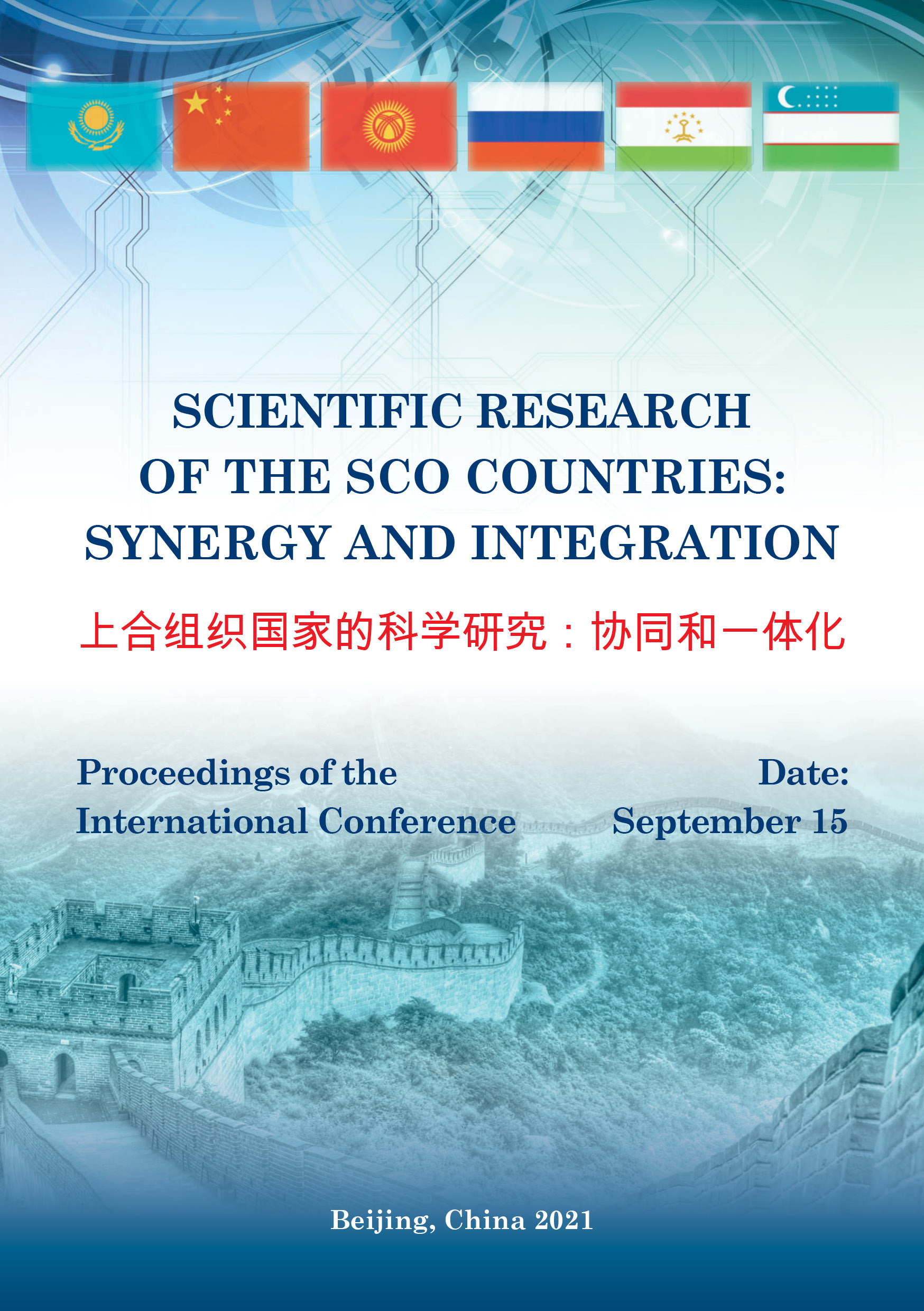The paper is devoted to nuclear magnetic resonance relaxometry (NMRR) method applications for the physical-chemical characteristics (PCC) study of crude oils, oil/water emulsions and dispersions by automated instrumental- mechatronic complexes.Method of pulse nuclear magnetic resonance relaxometry has great, yet not disclosed opportunities for the express analysis of fuels, oils and emulsions[1].Structure-dynamical analysis by NMRR gives an opportunity to solve several problems of theory and practice.
NMR-relaxation, dispersion characteristics, ordering, apparatus
Introduction
Wide application of the NMR methods in the industrial operative oil control is restricted by some problems: lack of instrumentation for automatic control of oil-mining and oil preparation processes. Among problems also are: absence of methods and computer programs; cumbersome and ponderousness of apparature; danger of fire and explosion; severe climatic conditions of oil-mining. Urgent requirement of the oil-industry - is the possibility for express-analysis in laboratories and on-line flow of physical-chemical parameters (PCP) of the oil disperse systems (ODS - crude and dry oils, oil products) - concentrations of water, sulphur, asphaltenes Asph, hydrocarbons, paraffin’s, density r and viscosity h in oils, water droplets distribution, as well as velocity of the crude oil flow (debit) in the pipeline after chink or bore-hole.
Characterization of oil systems using NMR techniques is a vast and expanding scientific activity Lo [1]. It is one of the key problems of petroleum reservoir engineering and NMR is the most perspective technology, capable to do such estimates Shikhof, Arns [2].
Methods and instruments to overcome marked problems
To overcome this restrictions, weelaboratedtheconstructionofmechatronic complex for measurements of PC-parameters of crude oils with incorporatedin it system of representative liquid probe sampling with program of automatic operation from microcontroller ATMEGA8515L. Complex compare to prototype [5] at ±4% accuracy of samplinggivesan opportunity to homogenize the flow, remove the dashes, scan the pipe by nozzle moving. The unique feature of the NMR approach is the diversity of chemical and physical properties at different structural levels that can be accessed using a single NMR instrument. For industry-oriented applications, an important goal is the implementation of nondestructive analysis and control procedures [3].
Results
Were received experimental correlations between PCC and NMRR- parameters, which became the basis for on-line flow express-methods of crude oils and oil-water emulsions characteristics determination.
NMRR-equipment for the on-line express-control is presented. Express-methods for determination in oil/water emulsions using NMR are described. Installation for the oil/water emulsion deemulsationis described.
Wide opportunities of Nuclear Magnetic Resonance Relaxometry (NMRR) for determination of structure-dynamical parameters were demonstrated in the papers Kashaev et al [4-6] and it is found, that NMRR is unique for molecular motions and viscosity studies. Such opportunities possess nuclear (proton) magnetic resonance relaxometry (NMRR) method, which need not sample preparation, nondestructive, can be used in explosive and fire dangerous zone, easy for automation and very fast – measurement time usually is less, then 2-3 minutes. From all methods of water control NMRR is the sole, which embrace the whole range up to 100% of water and gas concentrations. On-line NMR-control of crude oils and oil products components is not used until now, but we have constructed on-line NMR-control installation [7].
We have also designed new portable, easily transported relaxometers NMR NP-1 with parallel interface and NMR NP-2 (fig.1) with USB interface [Kashaev R.S., Temnikov A.N., Idiyatullin Z.Sh..Portable relaxometer of NMR. Patent of RF on useful model № 67719, 2006] with the weight less, then 15 kg, connected with Notebook by USB-port. It is used for express-analysis of PCP and has no analogues. In our Universities NMR NP-1,2 are used for science research and educational process. They are power supplied from 12 V accumulator or » 220 V. Time of measurement < 2 minutes. Sensibility is К = ν2D3 [МHz2см3] = 2700-4150 МHz2см3, that is near to “Minispec pc120” (Bruker,Germany). Magnetic system is build from rare earth elements alloys NdFeB. Heterogeneity of H1 field is < 2% in 75% of volume. See Table 1.

Fig.1. Portable Relaxometer NMR NP-2 with USB interface
Comparative parameters of portable NMR NP-2 with NMR-relaxometers Table 1
Parameters |
Portable NMR NP-2, Каzаn, Republic of Tatarstan |
Minispec Pc 120 (Bruker, Germany) |
MQA 6005 (Oxford, UK) |
|
Sensitivity ν2V |
2700 -4150 |
1600-6400 |
880 |
|
Resonance frequency , МHz |
10 - 18 |
10 - 40 |
2 |
|
Diameter of sample, мм |
10-30 |
10- 40 |
50 |
|
Power, WА |
15 (from accumulator) |
300 |
300 |
|
Dimensions: Electronics, Маgnet , см |
4х25х30 20х15х10 |
106х54х43 106х54х43 |
39х61х31 32х28х27 |
|
Маss, кg |
<15 |
80 |
30 |

Fig.2. Envelope of spin-echo signals (in the left part of monitor) and its decompositions on components (right part) at measurements of spin-spin T2i relaxation times.ObtainedNMR-parameters are set in the central bottom part.
Conclusions
Was elaborated the construction of mechatronic complex for measurements of PC-parameters of crude oils with incorporated in it system of representative liquid probe sampling with program of automatic operation from microcontroller ATMEGA8515L. By the nuclear magnetic resonance relaxometry(NMRR) method were studied physical-chemical characteristics (PCC) of crude oils, oil/water emulsions and dispersions by automated instrumental-mechatronic complexes.
1. S.-W.Lo, G.J.Hirasaki, R.Kabayashi, (2002) Soc. Petrol. Eng. Journ. 7, 24-34.
2. S.S.Zalesskiy, E.Danieli, B.Blumich, V.P. Ananikov (2014), Chem. Reviews, 114, 5641-5694
3. Kashaev R.S.-H. Apparature and NMR-method of oil disperse systems analysis.Lambert Academic publishing (LAP). GmbH&Co.KG, Saarbruken, Germany, 2012. 92 p.
4. Kashaev R.S.-H. Oil Disperse Systems Study Using Nuclear Magnetic Resonance Relaxometry (NMRR). Advances in Energy Research. V.16. 2013. Nova Science publishers, Inc. ID 12590, N-Y USA.
5. Kashaev R.S.-H. Correlations between viscosity and NMR-relaxation in oil disperse systems //Applied Magnetic
6. Kashaev R.S.-H., Temnikov A.N., IdiyatullinZ.Sh. Patent of RF №2544360; 20.03.2015 in Bull. №8, 2 p.





